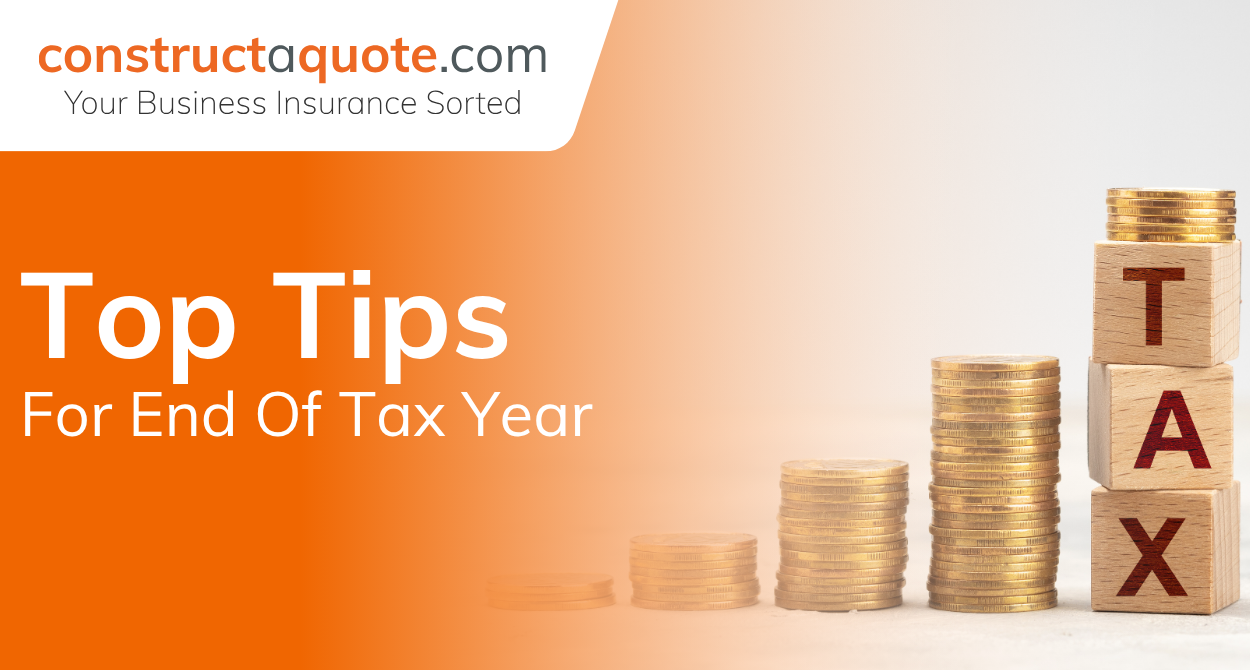by constructaquote - 21 June 2016


While the recession rumbles on and turnover is on the minds of most business people at the moment, the looming end to the current tax year end on April 5th provides you an opportunity to make sure your liability is no greater than needs this tax year or next, as let’s face it, nobody likes paying tax or paying penalties for late payment or submissions.
In the chilly economic climate, maximising income and minimising your tax liabilities may make the difference between failure and success.
1. Organise your PAYE
There are a number of important tasks which must be completed around the end of the tax year on April 5 if you operate PAYE (Pay As You Earn).
The key end-of-year requirement is to file your Employer Annual Return (form P35 and forms P14). Almost all employers are required to do this online.
In order to file online you need to register for the PAYE online service from HM Revenue & Customs (HMRC). The registration can take up to seven days, and there are penalties if you file your return late – so get in there early.
For a comprehensive guide on your end of year PAYE requirements visit -http://www.hmrc.gov.uk/payerti/bau-redirect.htm
2. Purchase under the enhanced capital allowance regime
Under the capital allowance system, businesses can write off plant and machinery at a rate of 20% a year or in some cases a 10% rate may apply. Those working in the construction industry should know that these rates will be reduced to 18% or 8% from April 6 2012.
Small businesses should be aware that the annual investment allowance is also being reduced in April. In the past this allowance allowed a business to claim 100% of the cost of new equipment against taxable profits in the year of purchase.
From April 6 the £100,000 a year allowance will be reduced to £25,000.
Where possible buy machinery or equipment under the enhanced capital allowances regime. Timing will affect the tax relief you receive.
3. Avoid the 60 per cent tax
The easiest way to avoid this is to ensure your total income for the year does not fall within an income band of £100,000 and £113,000. If your earnings fall within this tax band you will face a tax rate of 60 per cent because of the withdrawal of the £6,475 personal allowance.
Ways around this for people potentially affected include making pension contributions or gift aid donations, and equalising taxable income between husband and wife.
Tax planning will make sure wherever possible tax is not paid at 50 per cent or even 60 per cent. If it is too late to do this for the current tax year, try to rearrange your affairs to ensure it is in place for the next.
4. Tax relief on pension contributions
Owner-managed limited companies can obtain corporation tax relief on pension contributions of up to £255,000 for each director without using cash funds.
This offers potential tax savings of £71,400 for each director but you will have to get in quick as it ends on 5 April 2012.
Another tip is to effectively monitor directors’ loan accounts. If your director’s loan account goes overdrawn there are tax consequences both for the director and the company. Overdrafts such as these can be avoided if the loan accounts are monitored and reviewed on a regular basis.

by Charlotte Houghton - 7 October 2020
by constructaquote - 6 October 2020
by Charlotte Houghton - 29 September 2020
by Charlotte Houghton - 24 September 2020